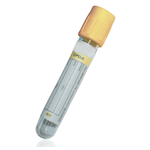Suitable Specimen Types
- Serum
- EDTA Plasma
- Li Hep Plasma
Sample Processing in Laboratory
Usual
Sample Preparation
Centrifuge
Turnaround Time
1 daySample Stability
4 ºC
Luteinising Hormone (LH)
General Information
LH is often used in conjunction with other tests (FSH, testosterone, oestradiol and progesterone) in the investigation of infertility in both men and women. LH levels are also useful in the investigation of menstrual irregularities (irregular periods) and to aid in the diagnosis of pituitary gland disorders. In children, FSH and LH are used to diagnose delayed and precocious (early) puberty.
In women, FSH and LH levels can help to tell the difference between primary ovarian failure (failure of the ovaries themselves) and secondary ovarian failure (failure of the ovaries due to disorders of either the pituitary gland or the hypothalamus in the brain). Increased levels of FSH and LH are consistent with primary ovarian failure. Causes of primary ovarian failure include developmental defects (Ovarian agenesis, Turner's syndrome, 17-alpha hydroxylase deficiency), radiation therapy (e.g. chemotherapy) or chronic anovulation due to factors such as Polycystic ovary syndrome (PCOS), adrenal disease, thyroid disease or an ovarian tumour.
When a woman enters the menopause and her ovaries stop working, FSH levels will rise.
Low levels of FSH and LH are consistent with secondary ovarian failure due to a pituitary or hypothalamic problem.
In men, LH controls the production of testosterone from the testes and FSH controls the production of sperm. High LH and FSH levels are due to primary testicular failure. This can be due to developmental defects in testicular growth or to testicular injury (e.g. viral infection, trauma, germ cell tumour, radiation therapy and autoimmune diseases).
Low levels of FSH and LH are consistent with pituitary or hypothalamic disorders.
In young children, high levels of FSH and LH and development of secondary sexual characteristics at an unusually young age are an indication of precocious (early) puberty. This is much more common in girls than in boys.
Patient Preparation
None
Notes
None Given
Reference Range
Males: 0.57 - 12.07 IU/L
Females
Follicular phase: 1.80 - 11.78 IU/L
Luteal phase: 0.56 - 14.0 IU/L
Mid Cycle: 7.59 - 89.08 IU/L
Post menopausal: 5.16 - 61.99 IU/L
Specifications
- EQA Scheme?: Yes
-
EQA Status:
NEQAS and WEQAS
